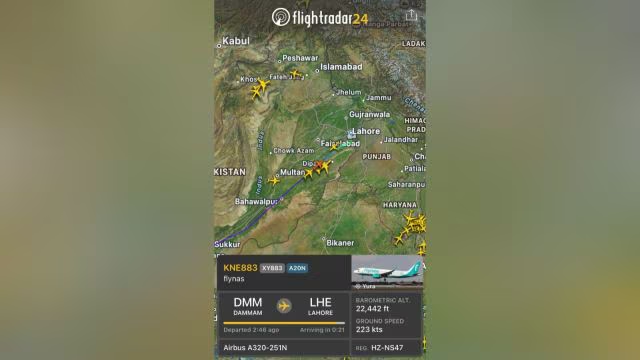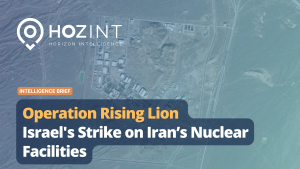Key Points
-
A US-brokered ceasefire between India and Pakistan was declared on 10 May, but mutual accusations of violations and continued military activity have undermined its credibility.
-
Operation Sindoor involved Indian airstrikes on alleged militant sites in Pakistan-administered Kashmir and Punjab; Pakistan retaliated with drones, missiles, and artillery.
-
Verified data indicates at least 36 fatalities and scores of injuries since 6 May, with disputed claims on targets and casualties.
-
Ceasefire violations persisted in Poonch, Rajouri, and Kupwara sectors, while high alert status continues along the Line of Control (LoC).
-
Aviation security concerns have been raised following allegations that Pakistan operated civil aircraft near military engagement zones during hostile action.
Weekly update
On May 10, India and Pakistan have agreed to a US-mediated ceasefire with immediate effect. However, despite the public commitment by both sides, the ceasefire has remained tenuous. Reports of renewed shelling in Kashmir, particularly in the Poonch and Rajouri districts, raise questions about both intent and control on the ground.
While India claims Pakistan initiated the violations, Islamabad has made parallel accusations. The use of artillery, drones, and cross-border raids suggests that tactical military decisions are continuing to escalate even amidst official commitments to de-escalation.
The military operations started in the early hours of 7 May 2025, when the Indian Air Force initiated Operation Sindoor, a large-scale air campaign targeting what Indian authorities described as terrorist infrastructure across Pakistan-administered Kashmir and eastern Punjab. The operation, launched in retaliation for the 22 April massacre of Hindu pilgrims in Pahalgam, represented one of India’s most extensive cross-border aerial strikes in recent years.
According to Indian officials, key targets included facilities allegedly linked to Lashkar-e-Taiba (LeT) and Jaish-e-Mohammed (JeM). Strikes were reported in Bahawalpur and Muridke in Pakistan’s Punjab province, notably at sites referred to as Markaz Subhan Allah and Markaz Taiba. In Pakistan-administered Kashmir, precision strikes reportedly hit locations in Kotli, Bagh, Muzaffarabad, and Bhimber, including: Markaz Abbas, Maskar Raheel Shahid, Syedna Bilal Camp, among others. Indian officials assert these were militant training camps or logistical hubs. These claims have not been independently verified, though Pakistan’s military confirmed 26 fatalities and 46 injuries, mostly from the Bahawalpur area, and reported power outages in Muzaffarabad.
In response, Pakistan launched retaliatory attacks later on 7 May and through 9 May, claiming to have struck multiple Indian airbases and military sites. Among the locations named by Pakistani and Indian sources were Udhampur, Pathankot, Adampur, and Bhuj. Pakistan’s Ministry of Defence also claimed to have used PL-15 air-to-air missiles, reportedly downing five Indian aircraft—an assertion unconfirmed by Indian authorities. Additionally, multiple drone incursions and artillery shelling were reported across the Line of Control (LoC), particularly in the Poonch and Rajouri districts of Jammu and Kashmir, resulting in at least 10 fatalities, including civilians and Border Security Force personnel.
India also claimed to have conducted additional strikes on Pakistani military infrastructure on 10 May, including air force facilities in Chaklala, Murid, Sargodha, and Skardu, as well as radar installations in Pasrur and an aviation base in Sialkot. Pakistan acknowledged some attacks but maintained that all key assets remained intact. These accounts remain contested, and much of the damage described by either side has not been independently verified.
The operational tempo of both countries also included extensive use of drones, missiles, and air-to-ground munitions, with reports of Indian Harop drones being shot down over Lahore and other Pakistani cities, and Pakistani loitering munitions launched toward northern and western India. Additionally, numerous electricity blackouts, flight cancellations, and temporary airport closures were observed on both sides, reflecting the broader disruption to civilian life.
Aviation Security (AVSEC)
From an aviation security standpoint, the military clashes present significant concerns regarding the safety of civil aviation in active conflict zones.
On 9 May, Indian Air Force spokesperson Wing Commander Vyomika Singh stated that Pakistan allowed civil aircraft to operate near the International Border (IB) during its attempted missile and drone attacks on the evening of 7 May. This raised fears of “using civilian aircraft as shields,” potentially endangering unsuspecting commercial flights. Singh stated that India chose restraint, avoiding interception near civil air corridors to prevent escalation or civilian harm.
As evidence, the IAF cited flight tracking data showing Saudi Arabian budget airline Flynas flight XY883 continuing on course from Dammam to Lahore. The flight landed at Lahore at 2:40 am IST on 8 May—just hours after Pakistan launched its attacks. This route likely took the aircraft near contested airspace.

“Pakistan is using civil airliners as a shield, knowing fully well that its attack on India would elicit a swift air defence response. This is not safe for the unsuspecting civil airliners, including the international flights…,” Singh remarked.
While India’s allegations are serious, the claim that Pakistan intentionally used civil flights as shields has not been independently verified. Pakistan has not issued public statements confirming or denying the routing decisions or civil-military coordination failures.
Forecast
Short-Term:
-
Tactical-level ceasefire violations likely to persist, particularly via drone incursions and shelling.
-
Aviation security in the region remains at heightened alert; international carriers may adjust routes.
-
Civil-military airspace coordination between India and Pakistan will remain fragile, with significant AVSEC implications.
Mid-Term:
-
If violations continue, expect enhanced radar and interceptor coverage near civil air corridors on both sides.
-
ICAO and IATA may be called upon to mediate or advise route restrictions.
-
Further escalation or accidental shootdown could spark a crisis reminiscent of MH17 or IR655.
Conclusion
Operation Sindoor has amplified traditional military and strategic risks while bringing renewed focus on aviation security in South Asia. Allegations of civilian airliner endangerment highlight the urgent need for standardised airspace deconfliction and crisis management protocols. With ceasefire violations persisting and both nations maintaining combat readiness, the threat to both regional security and civilian air traffic remains elevated.




